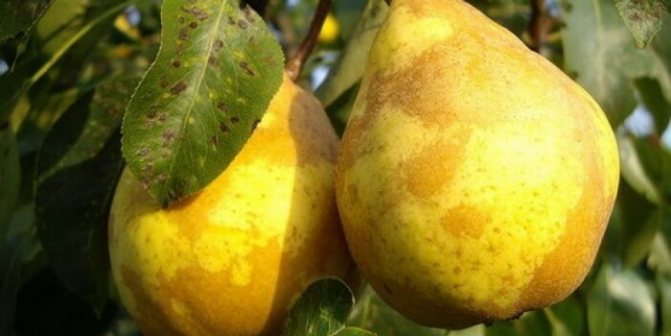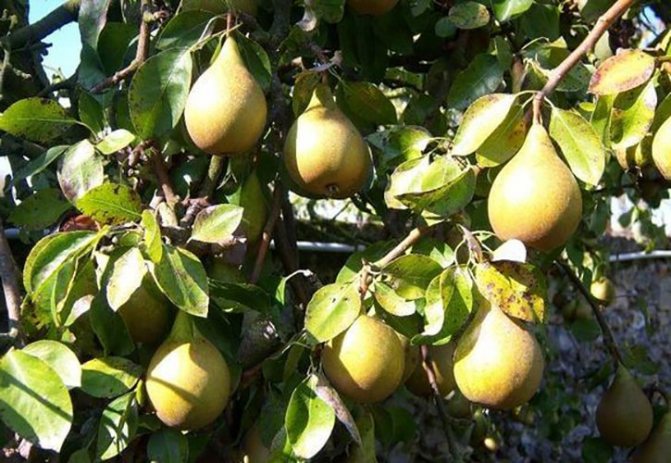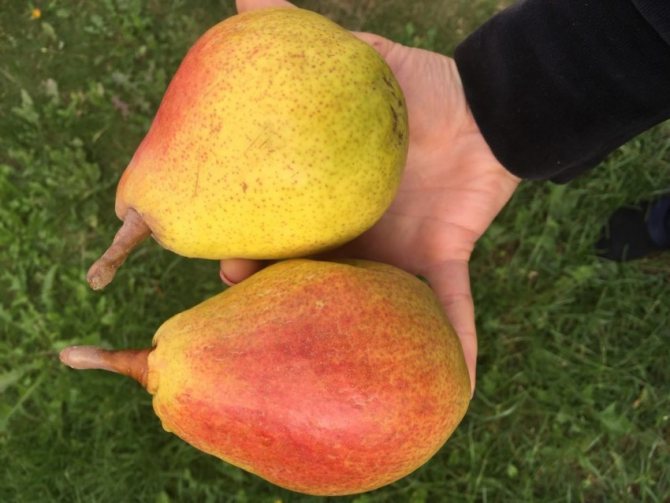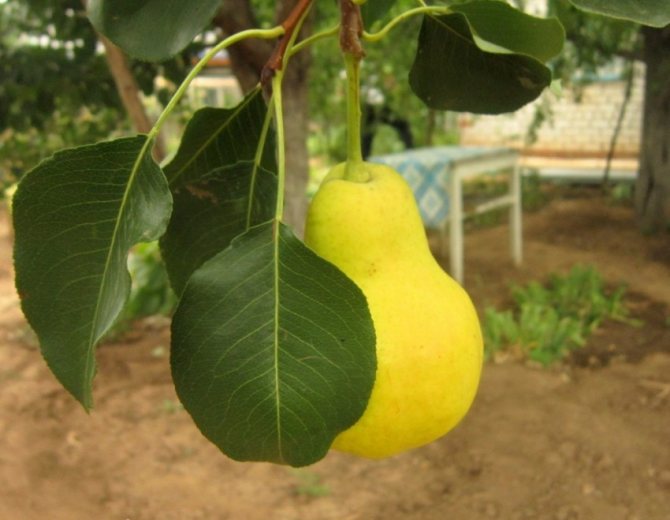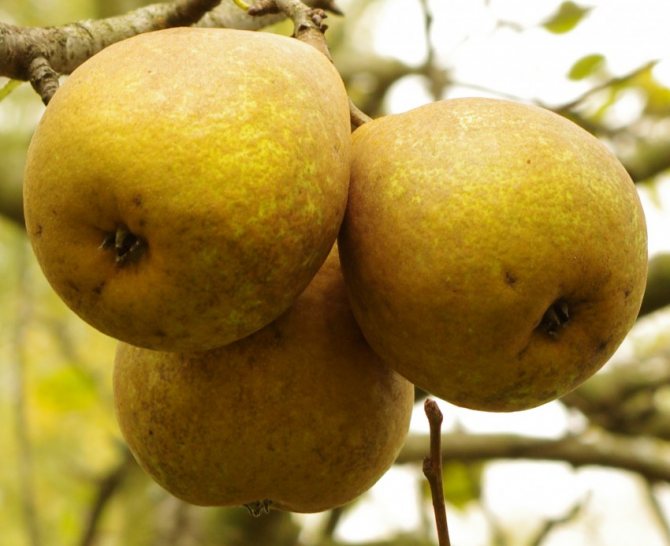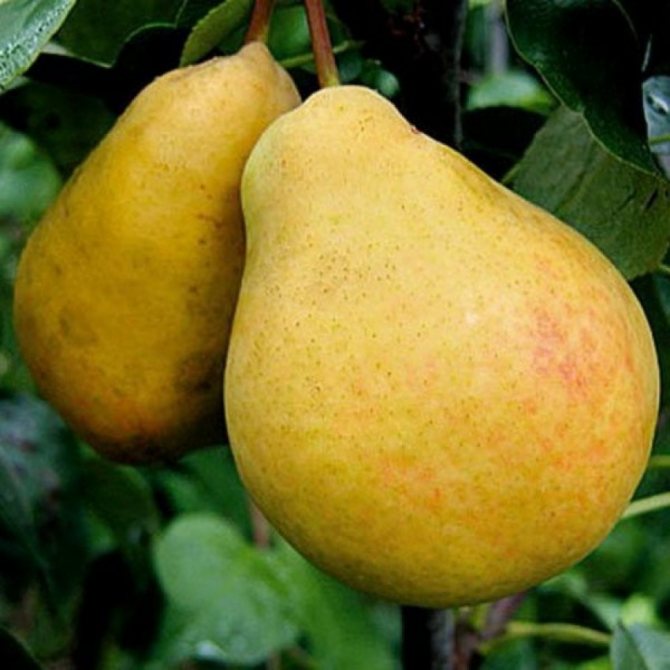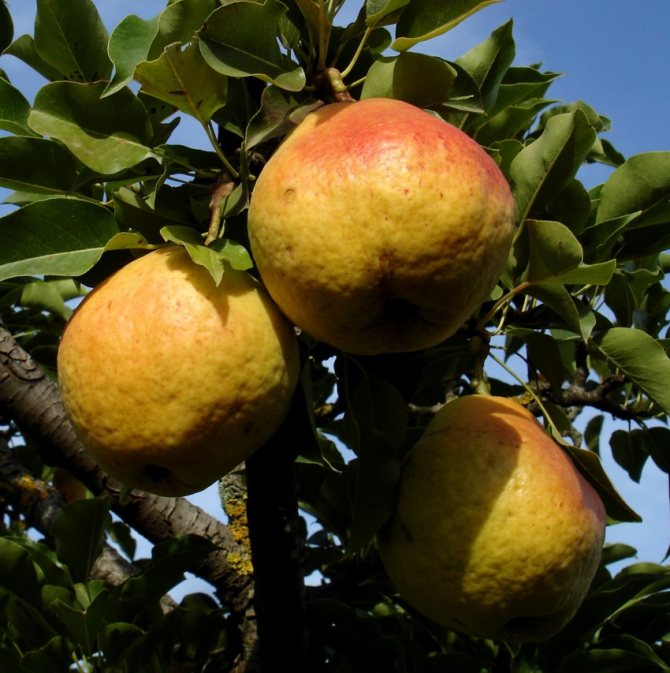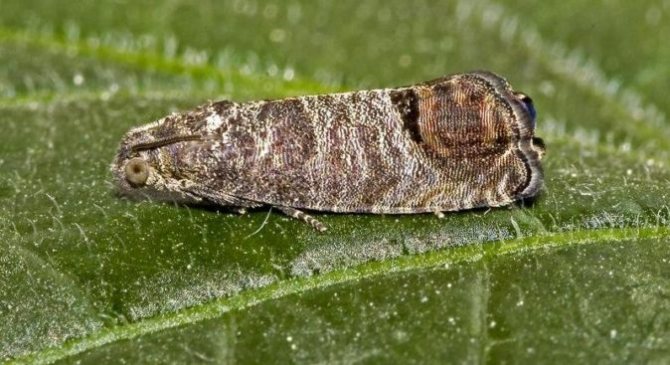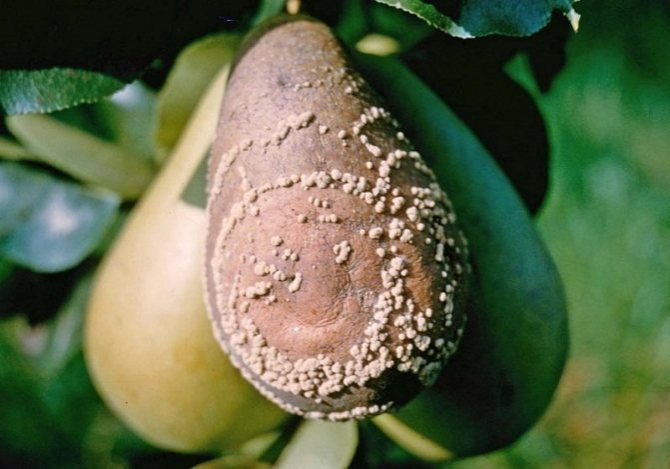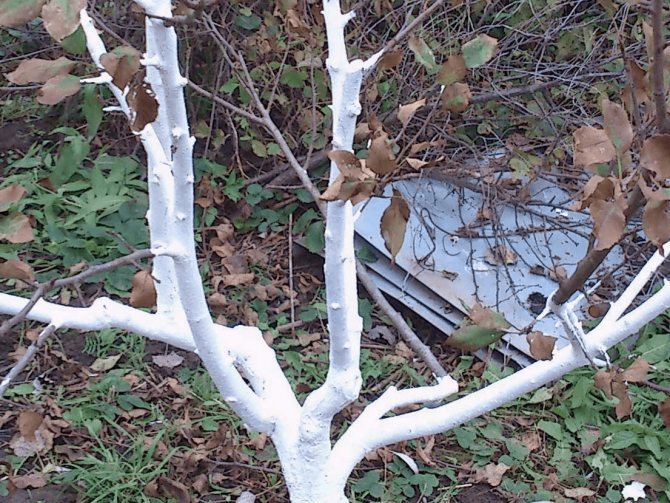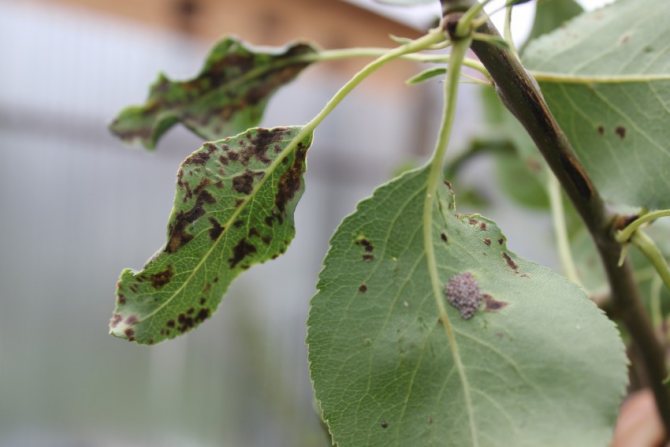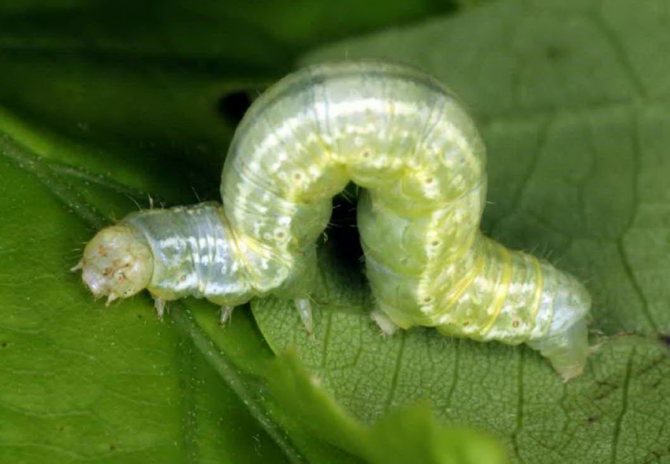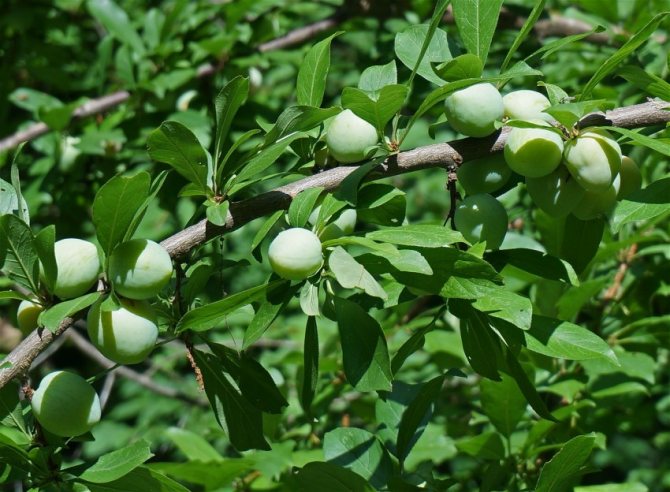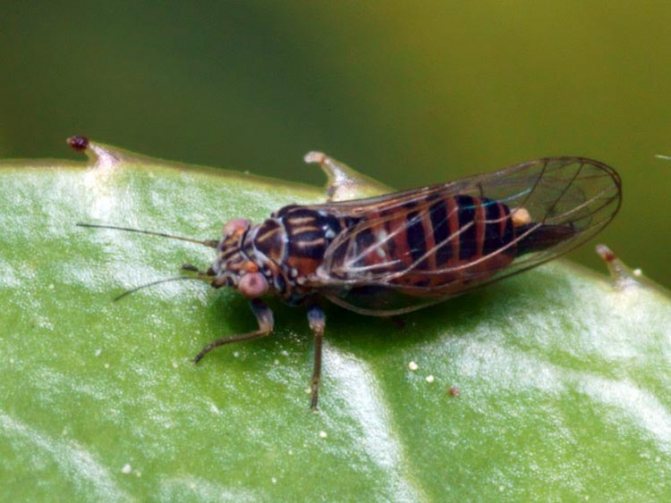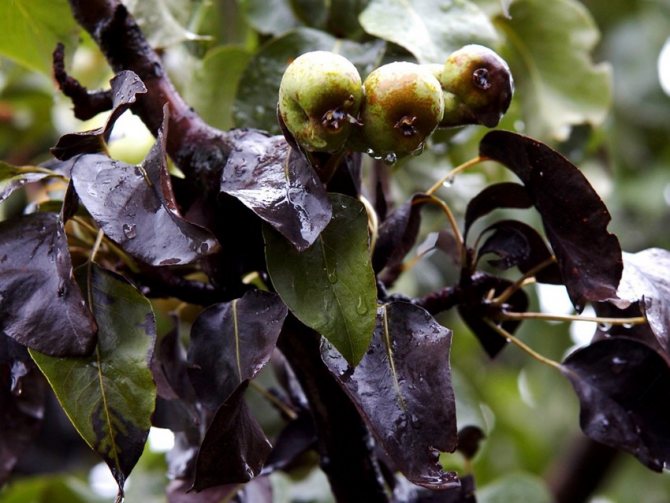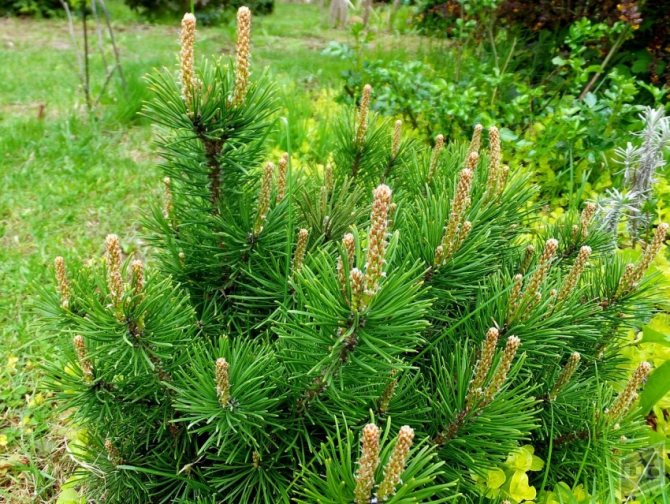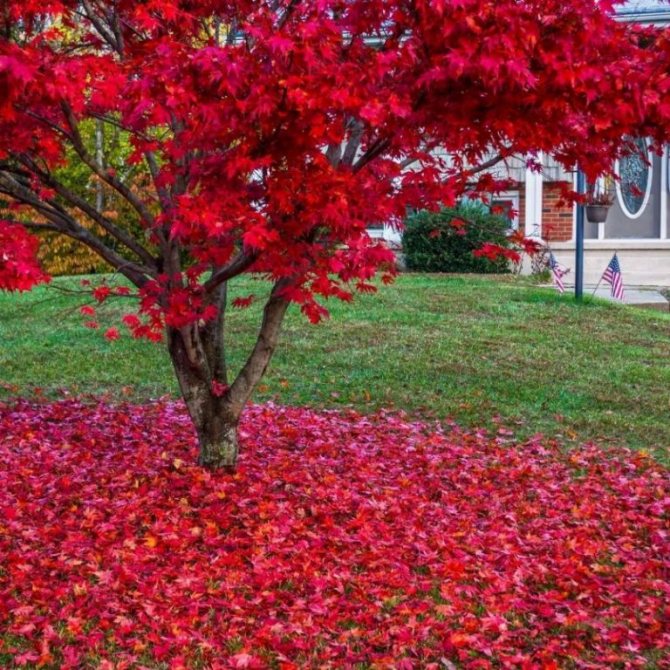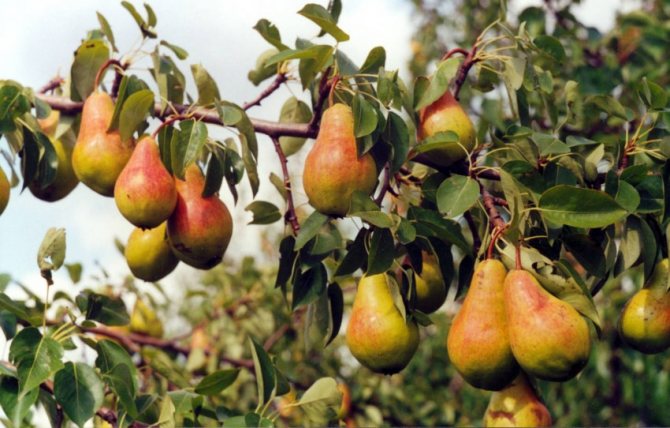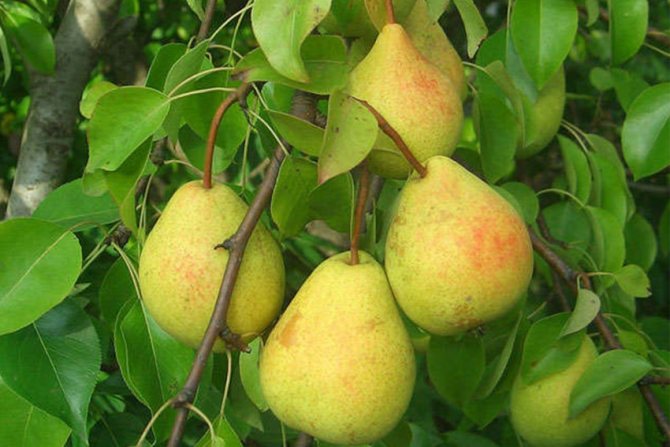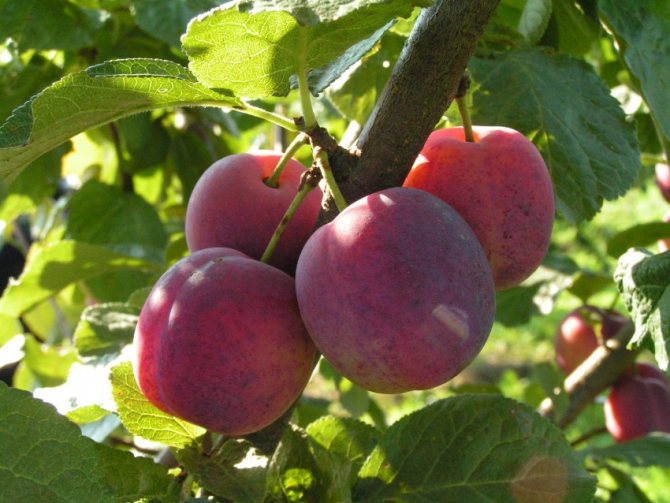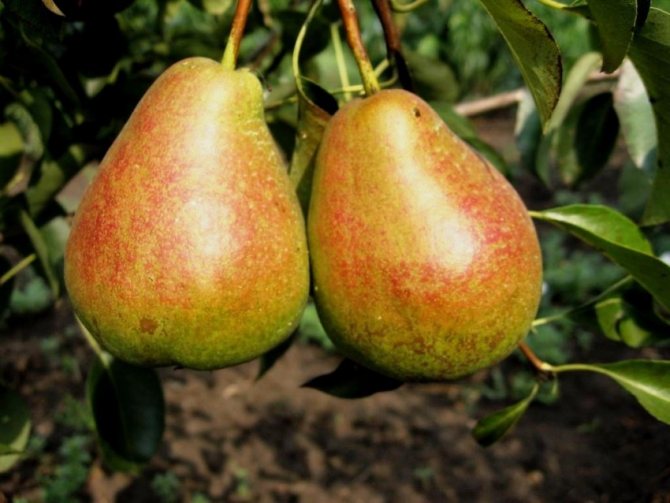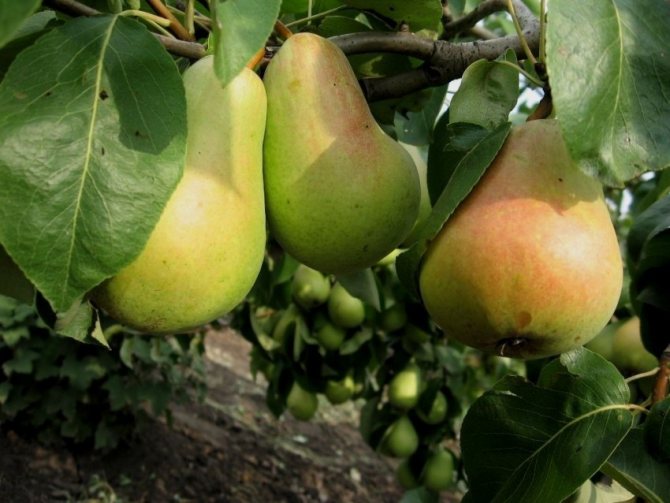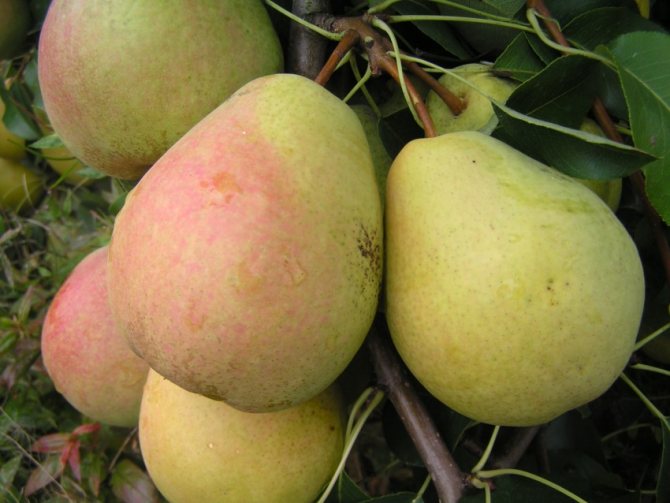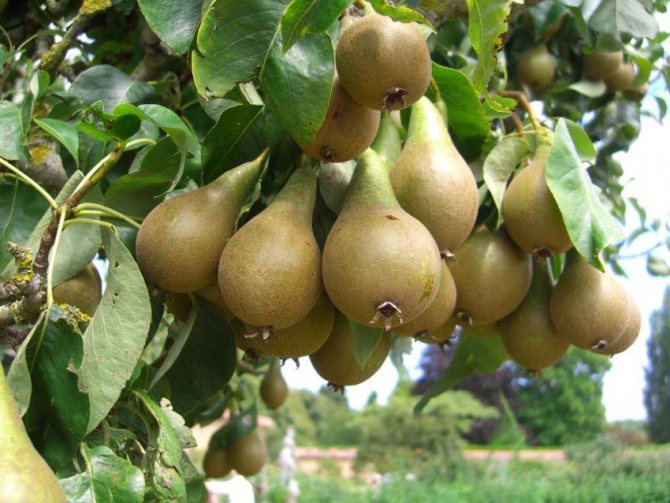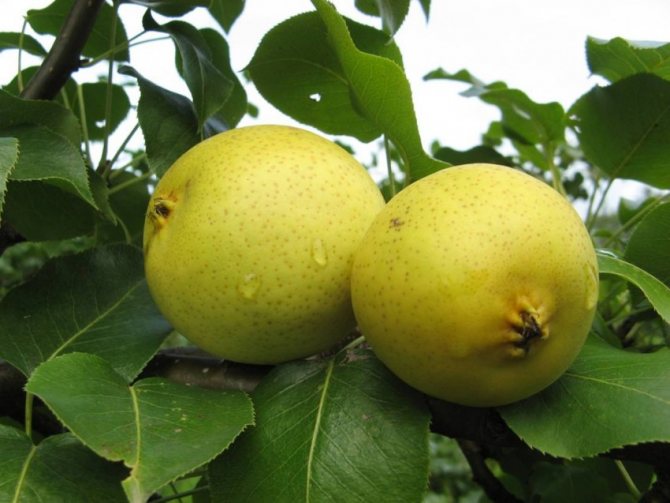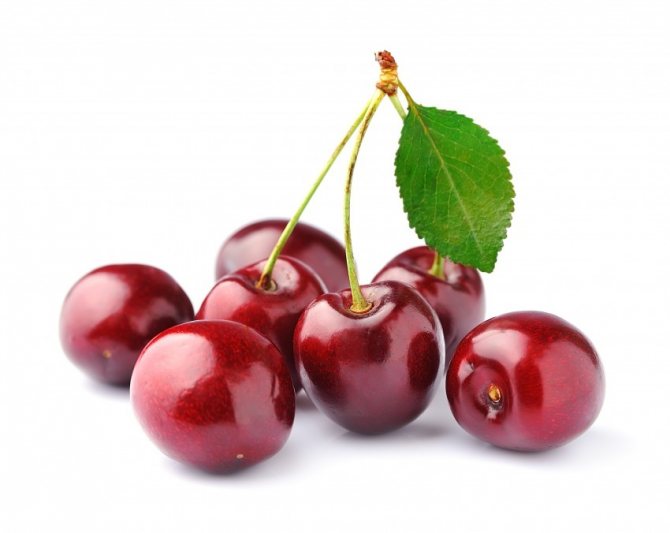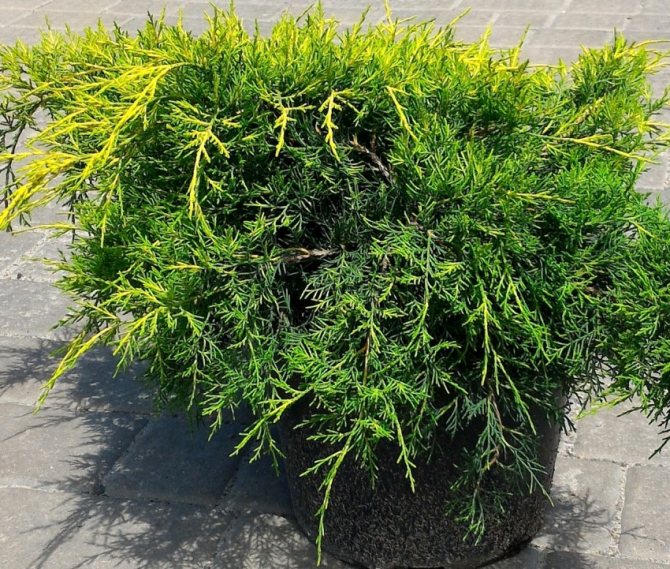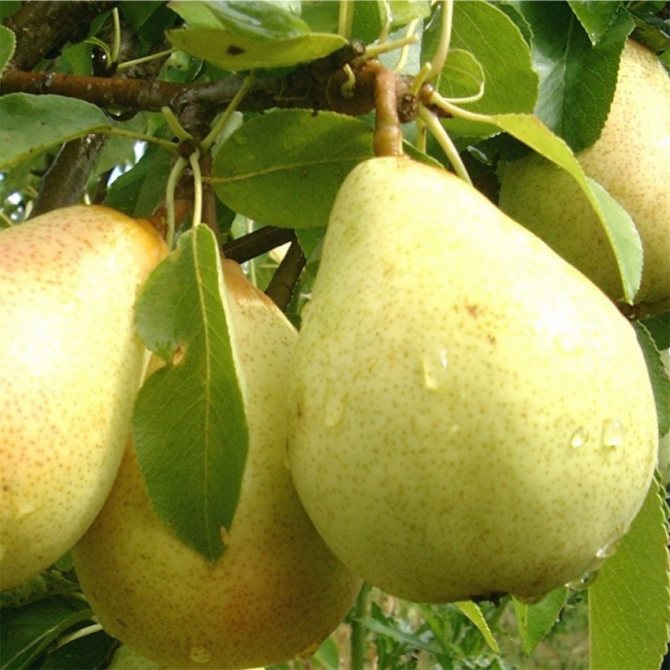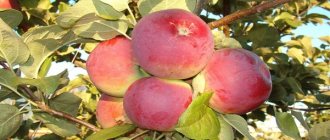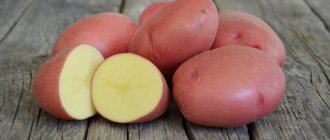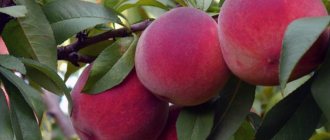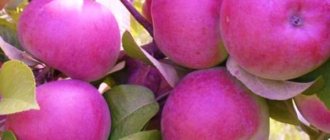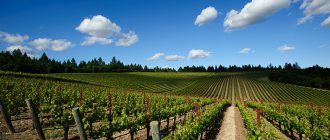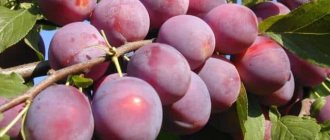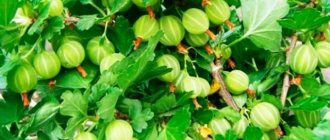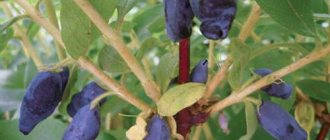The history of breeding varieties Williams or Duchess summer
The variety was developed in the late 18th century in the English county of Berkshire.
Later, Richard Williams actively distributed this pear, who made the new variety widely known in England and abroad and gave the variety his name.
It is believed that the basis for the Duchess (or Williams) pear was the Ordinary Pear variety.
Photo of pear Duchess (Williams)
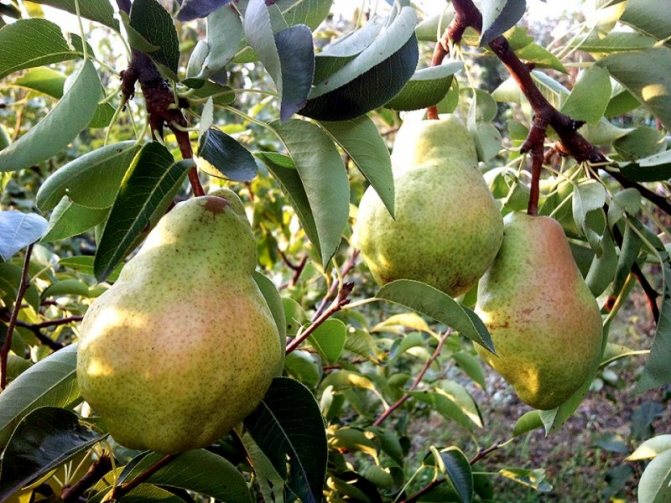
At the end of the first quarter of the 19th century, the first Williams pear seedlings appeared in France, and from the middle of this century this variety could be found in most European countries, including Russia.
There are several varieties of this variety, but the most popular are Duchess summer and winter.
This article will tell you about the Duchess summer pear.
EXCELLENT PEAR VARIETIES!
Pear ChizhovskayaPear August dew
Summer pear variety Duchesse is recommended for cultivation in the following Russian regions:
- Krasnodar Territory;
- the republic of Dagestan;
- Adygea;
- North Ossetia;
- Kabardino-Balkaria;
- Karachay-Cherkessia;
- Ingushetia;
- The Chechen Republic;
- Stavropol Territory;
- Rostov and Kaliningrad regions.
Also, this pear can be found in some CIS countries.
Features of cultivation in different regions of Russia
Duchesse varieties are not zoned throughout the entire territory of the Russian Federation. When choosing a pear, take into account the following patterns:
- Growing Angouleme is preferable in the Caucasus and Crimea. Northern areas are not suitable.
- Moscow Wild variety fits different regions: Central Asia, Caucasus, Moscow region.
- Moscow Garden variety is suitable for the Moscow region, as well as the European part of the country.
- The planting of a winter variety is carried out in the Crimea, the Caucasus, Uzbekistan.
- Summer Duchesse is cultivated in the southern regions.
Pear Duchess summer: characteristics and description of the variety
The height of summer Duchess pear trees reaches 3-4 m, their crown has a wide or rounded pyramidal shape, but it can also be asymmetrical. The growth rate of a young Duchess pear is high, but by the age of 10 its shoots begin to grow more slowly. This happens because by this time, active, abundant fruiting begins, so there are not enough nutrients for the growth of the tree.
Photo of Williams pear shape
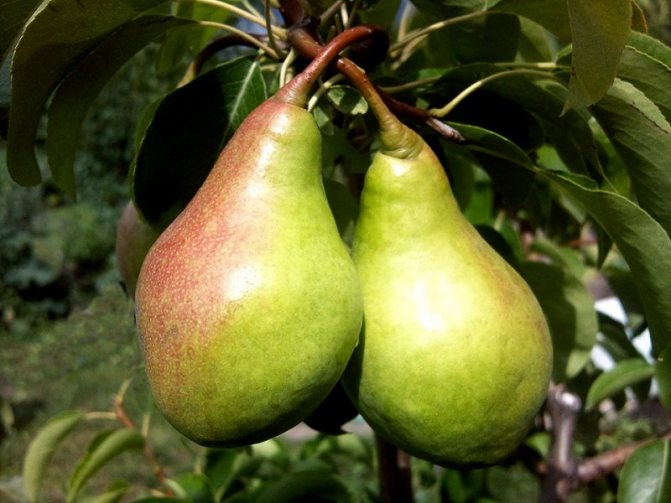

The color of the trunk and skeletal branches is gray, the bark is smooth, without roughness. The lateral branches are medium in size and thickness, slightly arcuate, with few lenticels, the color of the bark is light yellow. The foliage is large, its shape is ovoid, the tips are slightly pointed, the edges are small-crested. The leaf plates are of a dark emerald color, smooth, with a characteristic luster, folded in the shape of a boat. Lateral veins protrude slightly above the surface of the plates, are lighter in color than foliage. Buds are short, slightly pointed, located at an acute angle to the shoots.
Flowers are of medium size, collected in inflorescences, each of which has up to 5-7 pieces of buds. The color of the oval petals is dull white. Summer Duchess begins flowering later than many other pear varieties, but it still ends before the foliage begins to bloom.
Photo of pear flowers Duchess summer
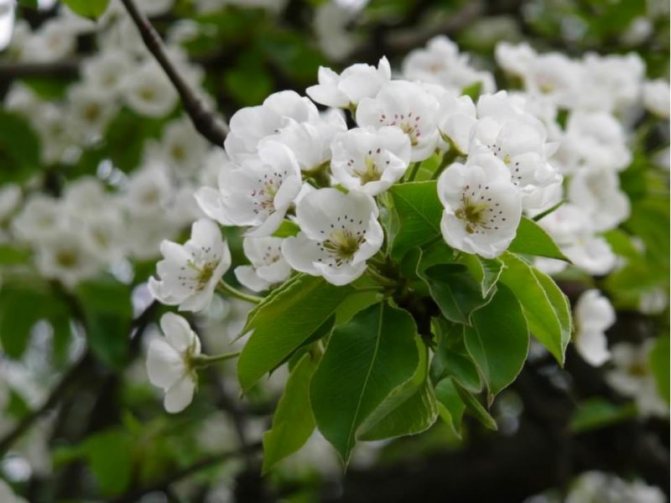

Important!
A characteristic feature of the Duchess pear is the high resistance of the flowers to returnable spring frosts - the buds do not freeze even with a strong drop in temperature. Therefore, the yield of this variety is always consistently high.
The size of ripe fruits of Duchess pears summer is above average, weight - 150-170 g, at the beginning of fruiting, fruits weighing about 190 g are removed from young trees.
VARIETIES OF PLUM!
Plum MorningPlum EtudePlum Stanley (Stanley)
The shape of ripe fruits is typical pear-shaped, slightly elongated, the skin is of medium thickness with small tubercles, glossy, with a delicious aroma. These pears are removed at the stage of incomplete maturity, while its color is pale greenish, at the stage of biological maturity it is yellow with a characteristic waxy bloom and gray dots. In places where the sun's rays fall, a characteristic blush appears on the skin. Sometimes small spots of rusty color may appear, diverging towards the poles.
Photo of the size of a pear Duchess summer
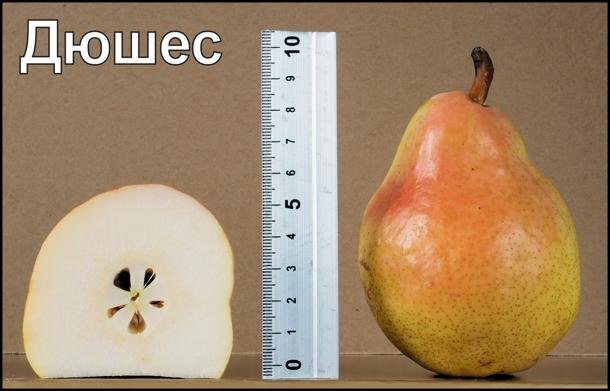

Peduncles are of medium size, thickened, slightly curved, can be set obliquely, in the upper part there may be a bell.
The seed chambers are of medium size, elongated-oval in shape. Seeds are small, oval, with pointed tips, in ripe fruits they are dark brown in color.
The pulp is white with a yellowish tint, buttery, very juicy, with a high sugar content and a slight acidity. The aroma is subtle, nutmeg. Tasters' assessment of the taste of the Duchess pear summer - 4.8 points.
Photo of the pulp of a pear Duchess summer
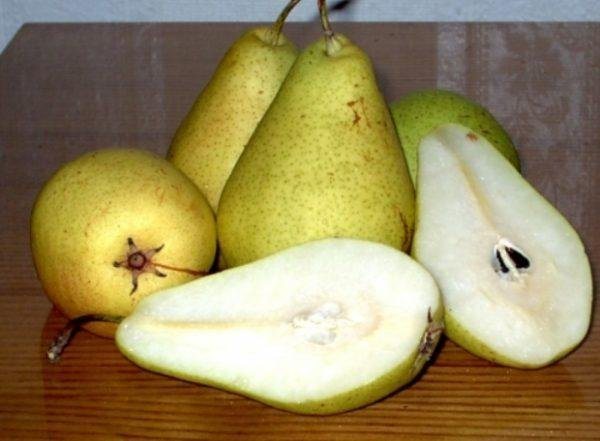

100 g of fruit contains:
- dry matter - up to 13.8%;
- sugars - 8.3%;
- titratable acids - 0.42%;
- ascorbic acid - 5.4 mg;
- P-active catechins - up to 42.6 mg.
Usually, the fruits are tied on branches in several pieces, firmly adhered to the stalks. Duchess pear ripens in mid-August, but completely ripe fruits do not tolerate transportation well and are not stored for a long time - they must be processed immediately after collection.
Therefore, they are removed at the stage of incomplete maturity, until the color of the fruit turns yellowish. In this case, it can be transported over long distances,
at home, the harvested crop is stored for up to 2 weeks, and in the refrigerator - up to 45 days.
APRICOT!
Apricot RoyalApricot Northern Triumph
Ripe Williams pear fruits are of universal purpose, which can be eaten fresh, they are dried, preserves and jams, juices are prepared.
Interesting!
Many housewives say that this Duchess pear is so sweet that when cooking jam you have to put a lemon in it, or reduce the added sugar to a minimum, otherwise the jam becomes candied.
Resistance to frost and periods of drought in this tree is low (especially in a young pear).
Air drought can also damage the aerial portion of these trees. Therefore, it is advisable to choose for them such areas where there will be protection from gusts of strong winds.
![Tinkoff (Debit Card) [CPS] RU](https://bgn.imadeself.com/wp-content/uploads/tinkoff-debetovaya-karta-cps-ru4.jpg)
![Tinkoff (Debit Card) [CPS] RU](https://bgn.imadeself.com/wp-content/uploads/tinkoff-debetovaya-karta-cps-ru4.jpg)
Varietal properties
The variety was bred in the 19th century in England and remains unprecedentedly famous to this day. Each individual variety and even the varieties of the Duchess variety have individual differences. The main features of Duchess summer include:
- the variety is fast-growing, late-summer and the first fruits can be obtained already in the third or fifth year;
- pears are harvested in August - in the second half;
- elongated fruits, the average weight of each is 200 g;
- pears have a yellowish or white flesh with a very delicate texture, the taste of the hearth is sweet with nutmeg notes;
- the skin of pears, despite its strength, is rather delicate; during ripeness, it has a yellow color with a blush on the sunny side;
- crumbling is not typical for pears;
- this variety is used for the preparation of baby food, they meet the highest quality standards;
- a universal variety, it can be consumed fresh and used for homemade preparations;
- the variety has a late flowering period, this allows flowers to not suffer during the period of spring frosts;
- self-fertility, for the formation of a crop, the plant needs pollination of pears of other varieties. It is best to choose for this such varieties as Pass Crassan, Olivier de Ser, Bere Ardanpon, Favorite Kappa, Forest Beauty. It is important that the flowering of the pollinator variety coincides with the period of summer Duchess flowering;
- pears in a cool dry place can be stored for more than a month, in a warm room the freshness preservation period is reduced to a couple of weeks, slightly unripe pears are collected for storage, carefully without damaging the skin;
- the variety has other names - Williams or Williams summer;
- summer Duchesse trees are tall with a densely leafy wide-pyramidal crown;
- the bark of the plant is smooth and has a gray color, the shoots are thick, crooked;
- leaves are large, sometimes folded in the shape of a "boat";
- high-yielding variety with low winter hardiness.
Rules for choosing a seedling
- Duchess summer is planted with two-year-old seedlings. When choosing a seedling, it is very important to pay attention to its condition. The root system must be developed, the presence of dry, damaged by diseases or broken roots is not allowed.
- The branches of the seedling should also be elastic, free from damage and signs of disease. The branches must be healthy. Leaves should not be dry or lethargic.
Place and conditions for landing
- Summer Duchess is quite picky about lighting. If you plant it in shaded areas in the garden, the tree will develop and grow poorly, which in turn affects not only the yield, but also the viability of the plant.
- The yield of this variety will be much higher on fertile chernozems, light loamy soils with sufficient moisture. The tree will not thrive on sandy soils, salty or wetlands. The tree does not tolerate soils with a close occurrence of groundwater, their level should not be higher than 2.5 m.
Sapling planting rules
- For planting seedlings of this variety, the end of April is best suited. But the procedure should be carried out before the kidneys swell. It is better to prepare the soil and the hole for planting in the fall or at least two weeks before planting.
- A hole for planting a seedling is dug no more than 1 m in depth, and its diameter should be 70 cm. The upper fertile soil, dug out of the hole, is laid aside, separately from the lower one. Unlike the technology of planting other pears, when planting Duchess summer, you cannot add to the hole or mix the soil with fresh manure. This causes damage and burns to the roots of the seedling.
- 2-3 buckets of compost mixed with peat and the top fertile layer of soil are laid in the pit, so as to form a mound in the hole. A seedling is placed on this hill, carefully spreading the roots.
- A young tree needs support. To do this, a stake is driven into the planting hole, not far from the tree, to a great depth so that it is stable. The hole is covered with an upper fertile layer of soil and compacted. The seedling is tied to a peg and watered. It is best to tie it with a figure eight to avoid injury to the tree.
Correct care of the variety. Watering
- The variety does not tolerate moisture deficit and droughts. The main watering is carried out before the beginning of the flowering stage and at its end, as well as in the fall. To do this, take 2-3 buckets of water for each year of the tree's life. For irrigation, if possible, it is better to use rainwater or settled water.
- After each watering or rain, the near-stem zone must be loosened, rid of weeds and covered with mulch.
Top dressing
- The tree is fed with organic fertilizers every 3 years, mineral fertilizers are applied annually. In the first year, the tree does not need feeding.
- The plant is fed with mineral fertilizers in the fall. Under digging the soil to a depth of about 15 cm, add 20-30 g of potassium chloride, 20-25 g of saltpeter and 20-25 g of superphosphate per 1 sq. M.Fertilize the entire near-stem zone along the perimeter of the crown.
- To introduce humus or compost around the trunk, along the entire perimeter of the crown, depressions of 15-20 cm are made. Fertilizers are applied at the rate of 5-8 kg per 1 sq. M.
Pruning
- Plants are pruned in the spring, until the sap flow has begun. In the first year, immediately after planting, shorten, above the buds, the main stem branch and the remaining branches by a quarter. This technique allows the tree to grow evenly in height and lateral.
- In the second year, the plant is cut in such a way as to shorten the lateral branches by 5-8 cm, and the central part by 25 cm. The lateral branches are cut so that the crown would acquire the shape of a truncated cone - the lower branches are longer than the upper ones. Thus, the crown of the tree is formed in the future.
- The tree is also sanitized annually. With sanitary pruning, broken, dry, frozen branches with signs of disease are removed. They also remove branches that over-thicken the crown.
Disease and pest control
- This variety does not have sufficient resistance to damage from diseases and pests. The bark of trees is often damaged by rodents and hares; you need to build a fence around the plant.
- In early spring, before bud break, trees are treated with Karbofos solution for prevention and pest control. It is prepared in the ratio of 90 g of the drug to 10 liters of water.
- The tree is often damaged by scab, which makes the fruit odorless and tasteless. To combat this disease, after the end of flowering, the plant is treated with 1% Bordeaux hexane. A good protection and prevention from scab will be the collection and burning of fallen, especially affected, leaves. To combat scab, the soil around the tree is treated with 0.3% Nitrafen.
- Sanitary pruning with subsequent burning of removed branches, as well as cleaning and burning of fallen leaves, is a good prevention against pests and especially against diseases. It is necessary to ensure that dead foliage does not remain on the branches, in most cases this is a place for wintering pests and diseases. Such foliage is removed from the tree and destroyed.
- After harvesting, when signs of disease or damage from pests appear, the tree is treated with complex preparations.
Harvesting and storage of crops
- The fruits of this variety begin to be harvested from mid-August. The variety is not characterized by shedding, so the fruits are firmly held on the tree and you do not need to collect them all at once. For storage, pears should be collected unripe, while making sure that they are not with damaged skin or broken.
- If the fruits are not overripe and undamaged, they tolerate transportation well. In cold rooms, the crop can be stored for about 45 days, but in warm rooms no more than two weeks. Ripe pears can be kept in the refrigerator for up to a week.
- Summer Duchess fruits are very tasty and suitable for fresh consumption, as well as for homemade preparations, making candied fruits or drying. Dried pears of this particular variety are added to muesli.
Preparing the tree for winter
- The variety does not have high winter hardiness, therefore it needs preparation for winter. The lower part of the tree is wrapped with paper or cotton cloth.
- Before the temperature drops, the tree trunk zone is mulched with a thick ball using manure or humus. Subsequently, when precipitation falls, the near-trunk zone is additionally covered with snow.
Productivity of pear summer variety Duchess
Summer pear Duchess is distinguished by an early onset of fruiting - grafted on a pear can begin to bear fruit in 5 years, and grafted on a quince - already in 3-4 seasons (however, such rootstocks are short-lived).
Pear harvest summer Duchesse - video
The yield of the Williams pear variety is high:
- a ten-year-old tree gives up to 35 kg of fruits;
- at the age of 19-20 years - more than 150 kg.
Also, much depends on the region of growth of this fruit tree.In Moldova, up to 250 kg are harvested from mature trees, in the center of the Kuban - up to 120 c / ha, and in mountainous areas - up to 200 c / ha.
Planting and leaving
It is best to plant young plants of both winter and summer Duchesse in the second decade of April. Experts advise to engage in planting activities before budding on the tree. Do not deepen the seedlings too much, otherwise they will die.
Please note: fresh manure cannot be poured into the planting hole, it burns the roots of the plant.
If the soil is not fertilized, you need to add black soil. The soil composition can be improved by adding peat compost. A cone is formed from this mixture, after which the roots of a young pear are distributed there. The tree needs a strong support to protect it from the wind. The garter is made in the shape of a figure eight so as not to damage the seedling.
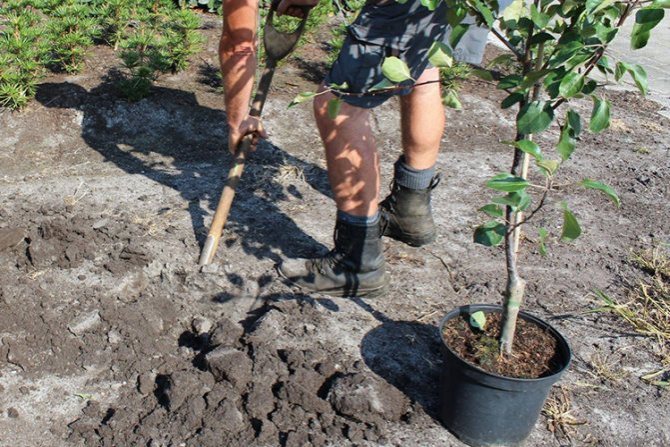

A very important nuance of care is mulching. It protects the soil from negative climatic conditions and temperature changes. To do this, take weeds, good humus and straw.
Pollinating varieties for pears Duchess summer
Pear Duchess summer is a self-fertile variety.
It means that
without the presence of a number of other varieties of pears - pollinators, its yield will be extremely low.
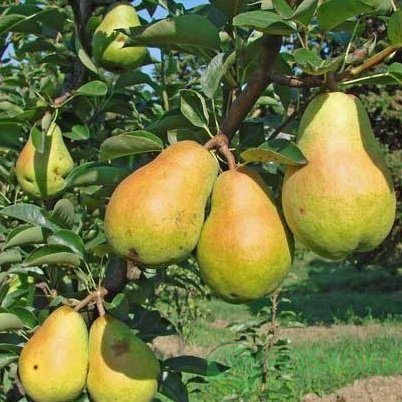

Experts recommend planting next to the following pollinator varieties with the same flowering periods as Williams pear:
- Forest beauty;
- Clapp's favorite;
- Olivier de Serre;
- Pass Corassan;
- Bere Bosk;
- Bere Ardanpon;
- Alexandrovka.
Care Tips
- Mulching is carried out in the fall before the temperature drops and rains.
- Pear pruning is done in the spring.
- In the first year of planting, it is advisable to cut the lateral branches above the buds and the central stem side by a quarter.
- In the second year of planting, the central part of the pear is reduced by 25 centimeters. The side branches are pruned to 5 centimeters.
- To protect the culture from the wind and cold, it is closed for the winter. The bottom of the barrel is wrapped in cotton cloth and newspapers.
- The pear should be watered before and after spring flowering - two or three buckets for each year of the plant's life. One watering is done in the first decade of autumn.
- It is not advised to feed Duchesse in the first year, since the hole was improved upon planting. Fertilizers are mostly applied in the fall. Mineral dressings need to be added every year:
- per square meter 20-30 grams of potassium chloride;
- 20-25 grams of superphosphate;
- 20-25 grams of nitrate.
Organic matter is applied every three years at the rate of 5-8 kilograms per square meter. Circular pits are formed around the pear and top dressing is added to a depth of 15-20 centimeters.
Diseases and pests
This variety differs in average resistance to scab and some other diseases typical for other pear varieties. But to such pests as aphids and honeydew, Duchess pear's resistance is low, therefore, preventive treatments of this fruit crop against "harmful" bugs are required.
If insects have already settled on the aerial part of this tree, then spraying the foliage and shoots with an insecticide solution will be most effective.
How to care for a tree
Like all trees in the garden, the Duchess pear needs the attention of the owner. To get a good harvest of tasty fruits, you need to provide the following tree care:
- Pear trees must be watered on the eve of flowering. It should be noted that this period for the Summer and Winter variants does not coincide. A few weeks after the first watering, when the fruits begin to set, the tree is watered again. For the third time, the Duchess pear must be watered after harvest, that is, in the fall. If the summer in the region turned out to be dry and hot, the amount of watering should be increased. The calculation of the required amount of water is simple: for each year of its life, the pear “receives” two buckets of water.
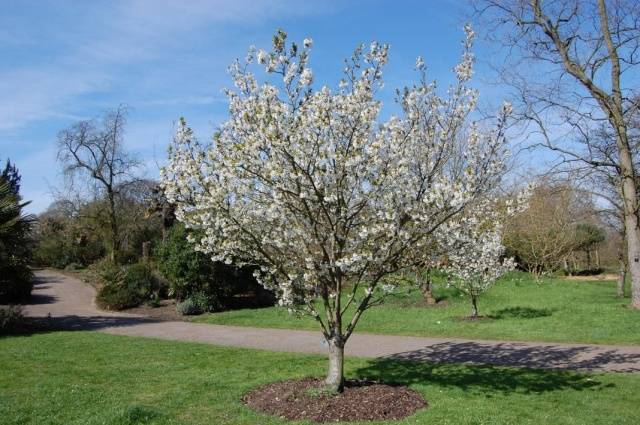

- Mulch made from organic materials preserves the moisture of the soil around the pear, prevents the roots from exposing and drying out, additionally nourishes the tree, and protects from frost.
- It is recommended to prune pear trees in spring. Until the age of five, the seedlings undergo formative pruning, trying to give the crown the desired appearance. In older pears, dry or diseased shoots are simply cut out (sanitary pruning), if necessary, rejuvenating pruning is performed.
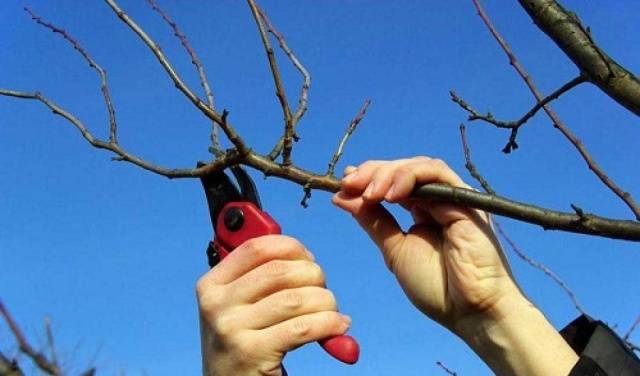

- In spring, Duchess pears need to be treated with a preparation containing copper (copper or iron vitriol, Bordeaux liquid). To save the tree from scab, it is sprayed with a urea solution. In autumn, it is advisable to treat Duchess with an antifungal agent.
- There is no need to cover trees for the winter - the Duchess variety tolerates the winters of central Russia well. To protect the bark of young seedlings from rodents, you can wrap it with burlap or non-woven fabric in the fall.
- Every year the tree is fed with mineral complex fertilizers. With a frequency of once every three years, it is necessary to introduce organic matter (cow dung or bird droppings), scattering it around the pear.
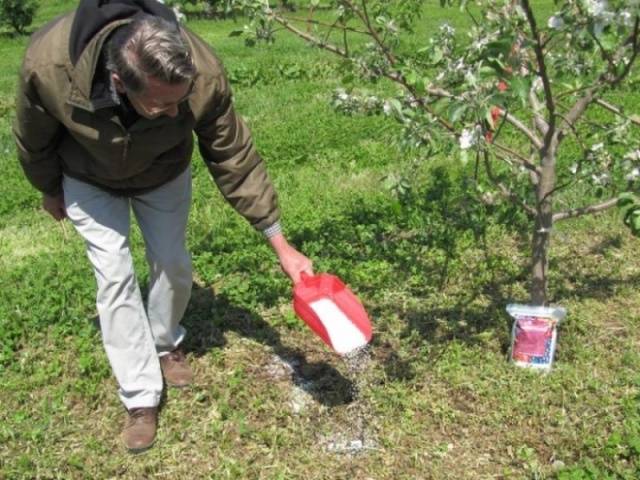

It is not difficult to grow a Duchess pear - planting and caring for this fruit tree is completely ordinary.
Advantages of the summer Duchess pear variety
Of the main advantages of Williams' pear, mention should be made of:
- early maturity;
- stable abundant fruiting;
- large fruit size;
- good taste and marketability of ripe pears;
- versatility of the harvested crop.
The main disadvantages of the variety are:
- low frost resistance of Duchess pear summer;
- poor drought tolerance;
- self-infertility;
- low resistance to a number of diseases and pest attacks.
Planting pears Duchess summer
The planting of the Duchess variety is carried out in the same way as the planting of other varieties of pear. A well-lit area is selected, protected from winds and without stagnation of moisture in the soil.
Photo of the pear planting scheme
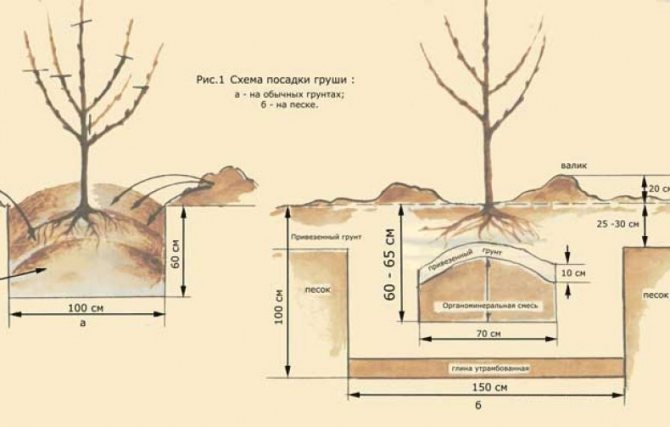

Humus or compost (at least 10 kg per square) is introduced into the depleted soil in the fall; in the spring, superphosphate, potassium salt and wood ash are added to the planting pits. These mineral fertilizers are mixed with the garden soil and laid out in a layer on the bottom of the pit, a seedling is installed in its center, next to which a peg is driven. The roots are neatly straightened along the diameter of the pit, the tree trunk is tied to a peg, and the pit is covered with the remaining soil. The root collar should be 5-7 cm above ground level.
Up to 30 liters of water are poured under each planted seedling.
How to plant a pear seedling - video
Harvesting and storage
Duchesse varieties determine the harvest time: from August to mid-October. Summer varieties of pear ripen earlier, winter varieties - later. To remove the pears, you need a ladder and a basket on the bottom of which the fabric is placed. Duchess fruits are removed carefully, without damaging the branches. When filling the basket, pour the contents into the container.
The shelf life of early pear varieties is 2 weeks. Late-ripening Duchesse is stored for up to 4 months. In the basement without losing useful properties and taste. Late varieties can be transported over long distances. Ripe fruits are suitable for universal processing, they are obtained from:
- juices;
- smoothies;
- baby puree;
- canned foods;
- fruit salads;
- jams, preserves;
- compotes.
The yield of Duchesse is up to 1 cent per season.
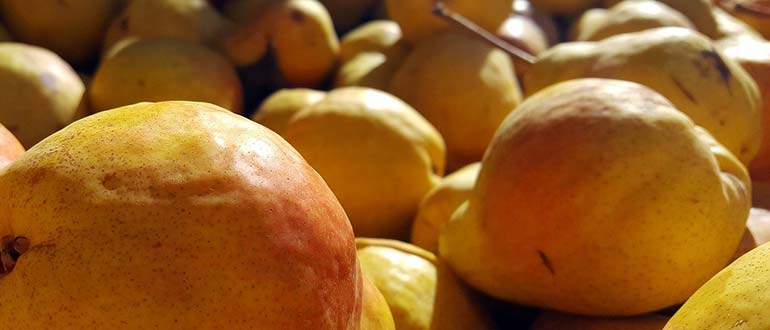

Further care of the Duchess pear summer
Further care for the Duchess pear variety summer consists in regular watering, fertilizing, loosening the trunk circle, removing weeds and preparing the tree for winter.
Pear care - video
In the early years, you need to water the growing pear well,
given that its resistance to drought is low. The soil in the near-trunk circle should always be wet, therefore it is recommended to apply at least 20-25 liters of water under the tree once a week. And in hot weather, the amount of watering is increased.
Top dressing of Williams fruit trees
In the first two seasons, the pear can not be fed if all the necessary fertilizers were applied during planting.
Later in the spring you need to make fertilizing containing nitrogen in the near-stem circle, and during flowering and fruiting - superphosphate and potassium salt.
How and what to properly fertilize fruit trees - video
Summer Duchess pears: tree pruning
In the spring, before the start of sap flow, pruning of all frozen, broken and damaged shoots is carried out at the Duchess summer pear. The cut points must be covered with garden pitch.
Photo of the diagram of the formation of the crown of a pear
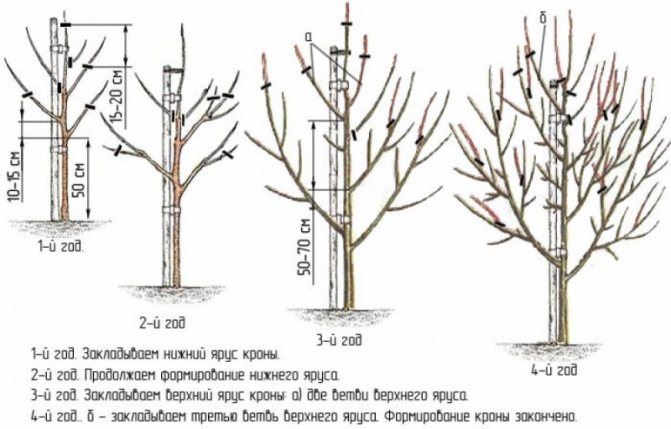

Photo of the scheme of anti-aging pear pruning


In autumn, excess shoots are removed that grow inside the crown and thicken it.
Photo of processing the place of cutting pears with garden pitch
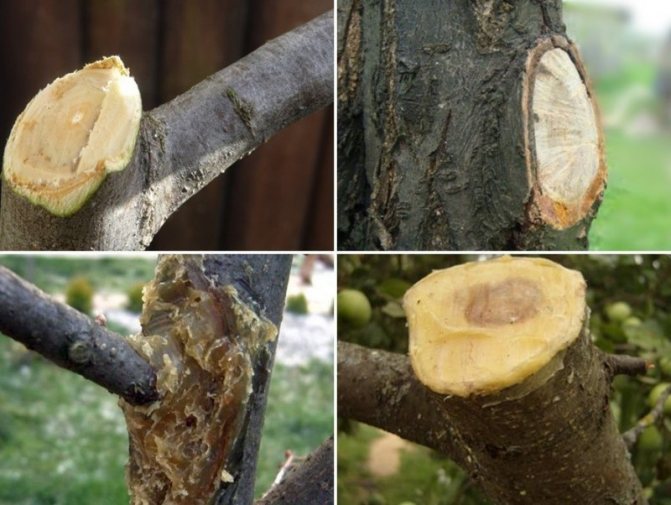

Varieties
There are several common varieties of the Duchess variety. Among those:
- D'Angulem. Medium-yielding variety. Up to 150 kilograms of large blunt-conical fruits can be harvested from one tree of this subspecies. It ripens in August, but the harvest can remain on the trees until the end of November.
- Wild Moscow. Yields a crop every two years, it is considered a melliferous variety. Its fruits are small - up to 400 grams.
- Garden Moscow. Produces large (up to 800 grams) fruits with pinkish skin. It is widely used for industrial purposes. The tree grows up to 30 meters.
- Summer. Has small fruits (about 200 grams). Yields a harvest in mid-August. The fruits of this species have a pleasant wine flavor.
- Winter. A frost-resistant variety that can ripen until early December. Resistant to adverse weather conditions. Unlike the fruits of other varieties, the Winter Duchess pears have a sour taste.
The conference will tell about the benefits and harms of pears in this article.
The presented varieties have similar agricultural techniques. Since they are unpretentious to care for, a novice gardener can take on any of them. If he fulfills all the requirements for agricultural technology, he will be able to achieve success in this matter in the first year.
Pear Duchess summer: reviews of those who grow
Below are some of the reviews of gardeners who have grown this pear variety in their garden plots.
Ksenia, 40 years old, Krasnodar Territory: On our site, parents planted a couple of seedlings of this pear 8 years ago. For the first five years, the trees were only actively growing. But in the sixth year, the trees bloomed profusely, many ovaries formed. It is good that other pears grew nearby - Forest Beauty and Favorite Klapp, thanks to which our Duchesse got dusty. As a result, props had to be placed under its branches, otherwise they would have broken off under the weight of the ripening crop. The fruits are delicious, sweet, juicy and aromatic.
Olga, 50 years old, Volgograd region: Summer Pear Duchess was planted on the site 10 years ago. The first 5 years the tree was just growing, and then it began to bear fruit. The first harvests were small, but ripe pears were not just large, but huge. And the last couple of seasons we got tired of harvesting from this tree, and already dried it for the winter, boiled jam, ate fresh, even sold several buckets. We are very pleased with the ripe fruit taste.
Nikolay, 60 years old, Stavropol Territory: I can say that Williams' pear bears abundant fruit only when there are pollinator varieties with the same flowering period nearby. Until the Alexandrovka pear, growing next to the Duchess pear, began to bloom and bear fruit in the garden, no harvests were observed on Williams (although she was 7 years old).
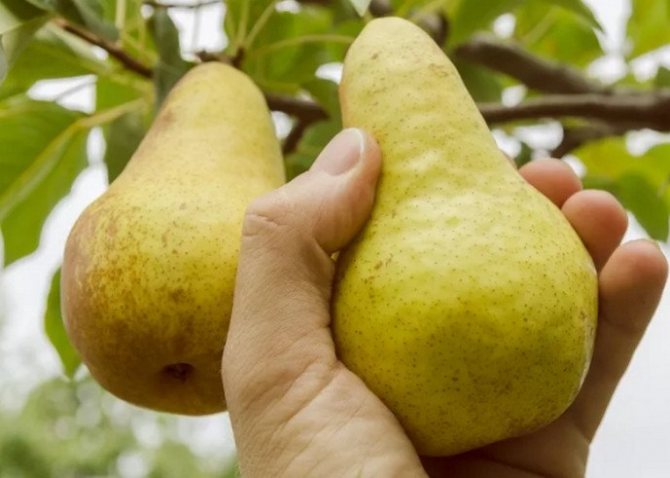

Summer pear Duchess is distinguished by its high yield, excellent taste of ripe fruits and their versatility.
Therefore, for decades, this variety has remained popular with gardeners from different Russian regions.
Testimonials
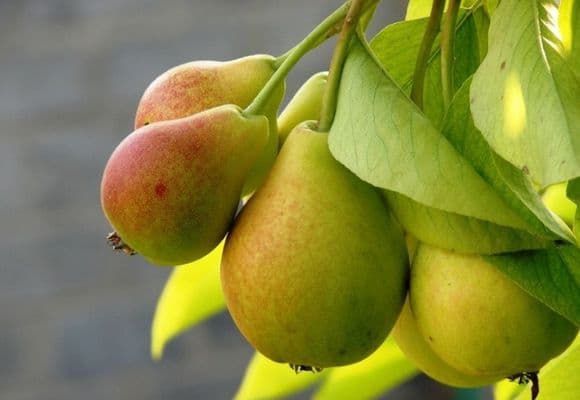

As an ideal variety, Duchess has excellent reviews, recognition and popularity. This is the benchmark in horticulture. Celebrate great taste, health benefits, easy growing.From pears of the valuable Duchess variety, wonderful jams, jams, compotes, marmalades, and dried fruits are obtained. Fresh, it is the most fragrant and delicious fruit. You can make wine. Duchesse simply decorates the garden.

